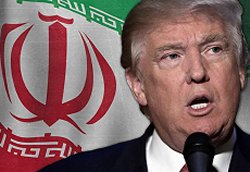When President Barack Obama spoke of Israel returning to its 1967 pre-war borders, many within the intelligence, law enforcement and military communities believed he spoke from either ignorance of the recent history of the Middle East, or worse, he spoke from a position of loathing for the Jewish State.
While many of Obama's media cheerleaders, sycophants and supporters share a deep-seeded hatred for the State of Israel -- especially members and organizations of the U.S. progressive movement such as Code Pink, Free Gaza Movement, Obama friends and supporters Bill Ayers, Jody Davis and others -- they too may suffer from overexposure to radical Muslim propaganda, according to a former United States police official who now resides in Israel.
Truth be told, on several occasions, Israel attempted to relinquish land to the Lebanese and Palestinian peoples only to have terrorists murder and destroy Israeli citizens and property..
INFORMING THE UNINFORMED
Hezbollah and Hamas are militant organizations deeply entrenched in, respectively, Lebanese and Palestinian society. Both groups were established in the 1980s –- the former during the First Lebanon War (1982) and the latter at the outbreak of the first intifada (1987), according to intelligence reports from The Meir Amit Intelligence and Terrorism Information Center in Israel.
Both exploited the weakness of the central government (be it the Lebanese regime or the PA) and effectively filled the governmental and military vacuums left by Israel after the withdrawals from Lebanon and the Gaza Strip.
Hezbollah and Hamas are both large terrorist groups with almost psychotic anti-Israel and anti-West radical Islamic ideologies. Both organizations are understood as being profoundly jihadist, waging a holy war against the Judeo-Christian infidels.
Hezbollah members practice an Iranian-style radical Shiite ideology that plays a central role in the organization's establishment and continues to play a central role in its operation. Hamas, on the other hand, is a radical Sunni Islamic movement with roots in Egypt's Muslim Brotherhood. Neither terrorist group just appeared out of thin air: Hezbollah was established in part as a result of longstanding religious and cultural links between the Shiite communities in Lebanon and Iran, which intensified after the fall of the Shah in 1979, thanks to President Jimmy Carter's betrayal of the Shah of Iran and his family.
It was his administration's inability to deal with the fall of the Iranian government and the rise of a radical Islamic caliphate.
Hamas was established as an offshoot of the Muslim Brotherhood, which maintained an extensive social and religious infrastructure in the Gaza Strip and some centers of activity in Judea and Samaria.
According to the Meir Amit Intelligence and Terrorism Information Center in Israel, Hezbollah in Lebanon and Hamas in the Palestinian Authority presented new models of terrorist organizations, different from their classical predecessors.
Advertisement
These organizations' terrorist activity represented only one of their fourfold foundations: the military-terrorist module, waging war on Israel in a variety of ways and means (from suicide bombing attacks to rocket fire at population centers); the political module, which prompted integration into the Lebanese and Palestinian regimes (while Hamas took over the Gaza Strip by force after the Israeli disengagement, Hezbollah in Lebanon has been careful to play by the rules); the social module, providing extensive social, religious, and educational services to the population, thereby filling the vacuum left by the state; and the media (or propaganda) module, based on the components of TV, radio, Internet, and newspapers, in the groups' hopes of winning the battle for the hearts and minds of the population,
THE ROLE PLAYED BY IRAN AND SYRIA
Hezbollah is the handiwork of Iran and serves as a tool to promote Iran’s strategic goals. The organization was established during the First Lebanon War (summer 1982) in the Beqaa Valley in Lebanon by the Iranian Revolutionary Guards, with Syrian encouragement and assistance. From the outset, it was possible to define Hezbollah as an Iranian project, undertaken in close coordination with Syria. While Hezbollah is integrated into Lebanese society and politics, it is the “Iranian hat” that dominates and ultimately dictates its ideology, policies, and nature.
With Hamas, the situation is more complex. The movement receives massive assistance form Iran, in terms of weapons, financing, and training. At the same time, however, there is a basic, inherent tension between Hamas and Iran, stemming from the conflict between radical Shiite Islam and Iran's ambitions for hegemony over the Middle East on the one hand, and Arabism and radical Sunni Islam, home to Hamas, on the other. Senior Hamas figures, led by Khaled Mashal, operate out of Damascus and from there steer the organization’s terrorist and political activities, and Hamas depends heavily on Syrian political and military assistance.
It is clear that the withdrawals from the security zone in southern Lebanon and from the Gaza Strip amplified the importance of Hezbollah and Hamas in the eyes of Iran and Syria. The withdrawals also increased the ability and motivation of those two states to use Hezbollah and Hamas as their proxies to exert pressure on Israel, not only through intermittent fighting with the Israeli Defense Force but also by threatening the civilians in Israel’s home front by means of the rockets stockpiled with their support in Lebanon and the Gaza Strip. Beyond their routine use, these rockets are supposed to be activated against Israel on “the day of reckoning” in accordance with the regional strategic interests of Iran and Syria.
Source: Examiner.com







